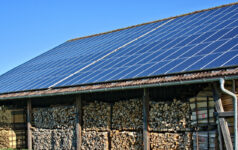Dalberg uses cookies and related technologies to improve the way the site functions. A cookie is a text file that is stored on your device. We use these text files for functionality such as to analyze our traffic or to personalize content. You can easily control how we use cookies on your device by adjusting the settings below, and you may also change those settings at any time by visiting our privacy policy page.
The global off-grid appliance market is critical for increasing access to electricity and services. Over two billion people worldwide lack access to reliable electricity. Renewable energy technologies, especially solar, are helping bridge this gap. Signs of success already exist in the fast-growing Solar Portable Lamps (SPLs) and Solar Home System (SHS) product market.
Renewable/hybrid mini-grids, the markets for which are still quite nascent, are also showing promise and often have better potential for higher loads. While the desire to power larger electrical appliances has in part driven the growth in these off-grid energy solutions, most off-grid solutions sold today provide only basic, low-power energy services, such as lighting and mobile phone charging. Under-electrified households often cannot afford or access enough energy to power additional services, such as cooling, refrigeration, and entertainment.
However, we know from the purchase behavior of electrified households in the same income segment that demand for these appliances is very high. Hence, just as LEDs revolutionized the off-grid lighting market by dramatically increasing efficiency and reducing energy costs, increasing the viability of the under-electrified appliance market will require additional innovations in cost-effectiveness, energy efficiency, and market availability. Off-grid appropriate appliances also add new revenue streams to off-grid business models, supporting the high overheads of building out a rural sales and service channel. This is critical for furthering the social impact of off-grid energy solutions and achieving scale. Viewing the off-grid appliance market and the clean energy market as inextricably linked will position stakeholders to unlock the market’s potential.
Promoting off-grid appliances beyond lighting and cooking is important to further drive social impact. Country-level data and surveys in key markets all point to televisions, cooling, and refrigeration as the next priority for households after satisfying basic lighting and communication needs; in fact, some households prefer televisions to lighting.
These appliances can significantly improve the quality of life for under-electrified households by enhancing productivity, increasing social awareness, and facilitating improved livelihoods. Several studies have shown how televisions can foster positive behavior change, including financial behavior, family planning, literacy, and health.
Refrigerators not only help preserve the nutritional value of food and reduce wastage of perishable products, but can also contribute to income generation for micro-entrepreneurs (e.g., owners of roadside kiosks selling chilled water in India). Another crucial application for refrigerators in off-grid areas is storing vaccines, which need to be at a specific temperature to be effective (2°C to 8°C). In tropical climates, fans can serve as a basic appliance of comfort, helping households and small businesses increase productivity and quality of life.
However, awareness and understanding of the off-grid appliance market is limited, and a need exists to advance the global discussion. In addition to energy supply and access, the conversation on energy usage in under-electrified markets has largely focused on opportunities for lighting, cooking, and mobile phone charging. Efforts to deliver these services can now serve as a springboard for expanding focus on a wider set of applications. The investigation that underlies this report found a substantial market for a broader set of appliances and off-grid energy services.
An improved understanding of the off-grid appliance market will lead to opportunities for new and existing market players. This report explores three off-grid appliance product categories—fans, televisions, and refrigerators—that present significant short- to mid-term opportunities. It begins with an estimation of the potential global demand and growth projections for these product categories. The report then explores the key trends on the supply and demand side of the market that underpin these projections.
The global off-grid appliance market is poised for significant growth and has the potential to become a $4.7 billion market by 2020; increasing energy efficiency is the key driver of this commercial opportunity. Improvements in energy efficiency enable off-grid households to run more appliances on the limited amount of electricity that off-grid energy systems typically provide. This, in turn, fuels consumer demand for new types of products. LED technology has already had this impact in the off-grid lighting market. Super efficient LED lighting products that run on only a few watts can meet off-grid household lighting needs while requiring significantly less energy supply than conventional lighting technologies. This has a significant impact on costs. It also drives rapid sales growth for both LED lighting products and the solar energy devices used to power them.
Introducing similarly high-quality, super energy-efficient appliances into the off-grid market will allow consumers to enjoy improved consumption of energy services, without requiring a significant transformation of existing energy supply or business models. The projected growth of the SHS market—estimated to be a $1.3 billion market by 20249—and the greater access to energy it enables will also be a major driver for increasing demand of off-grid appliances.
As a result of efficiency gains and increased energy access, this report estimates off-grid fans, televisions, and refrigeration devices combined will represent a potential market of over $4.7 billion by 2020.
This would mean an annual growth of 15 percent for fans, 25 percent for televisions, and 37 percent for refrigerators. In addition, the analyses that underpin this estimate were rooted in conservative assumptions about key market variables, and the opportunity could be substantially greater.














